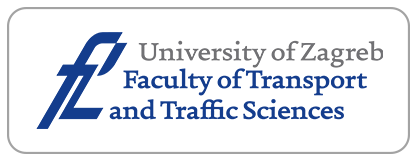Efficient Communication Using Cluster-To-Cluster Source Route Cooperative Data Transmission Approach in Wireless Ad Hoc Networks

Downloads
The wireless ad hoc networks (WANETs) provide a flexible and adaptable infrastructure for transferring data in different environments. It supports multiple description (MD) video transfers, addressing error-prone WANETs, which are becoming increasingly critical as their usage grows. Previous approaches to multicasting MD video in WANETs had significant challenges. Ensuring multimedia streaming quality over WANETs while reducing buffering and traffic are crucial challenges. To overcome the problems, this work proposes a cluster-to-cluster source route cooperative data transmission (C2C-SRCDT) method for packet communication in WANETs. Initially, nodes in cluster formation will be created, and each node’s weights will be evaluated for cluster head (CH) selection. Then, Dijkstra’s transmission routing aware-multiple description video (DTRA-MDV) method estimates the cluster node to select the shortest distance routes between each cluster to send the multiple (image/videos) data. Finally, the time-slot multiple route selection (TSMRS) technique improves throughput and reduces breakage links. C2C-SRCDT reduces buffering and transfers data quality (image/videos) based on network lifetime, bandwidth and transmission time. The proposed simulation is evaluated using various parameters: data delivery ratio, loss, delay, throughput and energy consumption. The proposed system achieves a data delivery ratio of 92%, a delay of 40 sec and a throughput of 91%. These metrics analysed the improvement in video or image quality and traffic to avoid data transfer and transmit the wireless network better than previous approaches.
Downloads
Nurlan Z, et al. Wireless sensor network as a mesh: Vision and challenges. IEEE Access. 2021;10:46–67. DOI: 10.1109/access.2021.3137341.
Cho KH, Lee SH, Tan VYF. Throughput scaling of covert communication over wireless ad hoc networks. IEEE Transactions on Information Theory. 2020;66(12):7684–701. DOI: 10.1109/tit.2020.3011895.
Im HS, Lee SH. Mobility-assisted covert communication over wireless ad hoc networks. IEEE Transactions on Information Forensics and Security. 2020;16:1768–81. DOI: 10.1109/tifs.2020.3045132.
Yan J, Wu D, Wang R. Socially aware trust framework for multimedia delivery in D2D cooperative communication. IEEE Transactions on Multimedia. 2018;21(3):625–35. DOI: 10.1109/tmm.2018.2890196.
Xiao Y, et al. Reinforcement learning based energy-efficient internet-of-things video transmission. Intelligent and Converged Networks. 2020;1(3):258–70. DOI: 10.23919/icn.2020.0021.
Jiang B, Yang J, Ding G, Wang H. Cyber-Physical Security design in multimedia data cache resource allocation for industrial networks. IEEE Transactions on Industrial Informatics. 2019;15(12):6472–80. DOI: 10.1109/tii.2019.2917693.
Huang XL, Li YX, Gao Y, Tang XW. Q-Learning-Based spectrum access for multimedia transmission over cognitive radio networks. IEEE Transactions on Cognitive Communications and Networking. 2020;7(1):110–9. DOI: 10.1109/tccn.2020.3027297.
Zhang W, Lei W, Zhang S. A multipath transport scheme for Real-Time multimedia services based on Software-Defined networking and segment routing. IEEE Access. 2020;8:93962–77. DOI: 10.1109/access.2020.2994346.
Garg S, Kaur K, Kumar N, Rodrigues JJPC. Hybrid deep-learning-based anomaly detection scheme for suspicious flow detection in SDN: A social multimedia perspective. IEEE Transactions on Multimedia. 2019;21(3):566–78. DOI: 10.1109/tmm.2019.2893549.
Sun Y, et al. Energy-efficient multimedia task assignment and computing offloading for mobile edge computing networks. IEEE Access. 2020;8:36702–13. DOI: 10.1109/access.2020.2973359.
Thiyagarajan K, Lu R, El-Sankary K, Zhu H. Energy-Aware encryption for securing video transmission in internet of multimedia things. IEEE Transactions on Circuits and Systems for Video Technology. 2018;29(3):610–24. DOI: 10.1109/tcsvt.2018.2808174.
Gangwar AK, et al. A novel $k$-means clustering and weighted $k$-nn-regression-based fast transmission line protection. IEEE Transactions on Industrial Informatics. 2020;17(9):6034–43. DOI: 10.1109/tii.2020.3037869.
Alenezi M, et al. Unsupervised learning clustering and dynamic transmission scheduling for efficient dense LORAWAN networks. IEEE Access. 2020;8:191495–509. DOI: 10.1109/access.2020.3031974.
Daher A, et al. A dynamic clustering algorithm for multi-point transmissions in mission-critical communications. IEEE Transactions on Wireless Communications. 2020;19(7):4934–46. DOI: 10.1109/twc.2020.2988382.
Liu F, Chang Y. An energy aware adaptive kernel density estimation approach to unequal clustering in wireless sensor networks. IEEE Access. 2019;7:40569–80. DOI: 10.1109/access.2019.2902243.
Li Y, et al. Speaker clustering by co-optimising deep representation learning and cluster estimation. IEEE Transactions on Multimedia. 2020;23:3377–87. DOI: 10.1109/tmm.2020.3024667.
Li Y, et al. Acoustic scene clustering using joint optimization of deep embedding learning and clustering iteration. IEEE Transactions on Multimedia. 2019;22(6):1385–94. DOI: 10.1109/tmm.2019.2947199.
Wang B, et al. Learning adaptive neighbourhood graph on Grassmann manifolds for video/image-set subspace clustering. IEEE Transactions on Multimedia. 2020;23:216–27. DOI: 10.1109/tmm.2020.2975394.
Jan MA, Usman M, He X, Rehman AU. SAMS: a seamless and authorised multimedia streaming framework for WMSN-Based IOMT. IEEE Internet of Things Journal. 2018;6(2):1576–83. DOI: 10.1109/jiot.2018.2848284.
Lin F, et al. A framework of priority-aware packet transmission scheduling in cluster-based industrial wireless sensor networks. IEEE Transactions on Industrial Informatics. 2019;16(8):5596–606. DOI: 10.1109/tii.2019.2944980.
Yazici A, Koyuncu M, Sert SA, Yilmaz T. A fusion-based framework for wireless multimedia sensor networks in surveillance applications. IEEE Access. 2019; 7:88418–34. DOI: 10.1109/access.2019.2926206.
Usman M, Jan MA, He X, Chen J. A mobile multimedia data collection scheme for secured wireless multimedia sensor networks. IEEE Transactions on Network Science and Engineering. 2018;7(1):274–84. DOI: 10.1109/tnse.2018.2863680.
Park M, Sohn S, Kwon K, Kwon TT. MaxPass: Credit-based multipath transmission for load balancing in data centres. Journal of Communications and Networks. 2019;21(6):558–68. DOI: 10.1109/jcn.2019.000047.
Mahmud I, Lubna T, Song YJ, Cho YZ. Coupled multipath BBR (C-MPBBR): An efficient congestion control algorithm for multipath TCP. IEEE Access. 2020;8:165497–511. DOI: 10.1109/access.2020.3022720.
Cheng Y, Jia X. NAMP: network-aware multipathing in software-defined data centre networks. IEEE/ACM Transactions on Networking. 2020;28(2):846–59. DOI: 10.1109/tnet.2020.2971587.
Zhang W, Lei W, Zhang S. A multipath transport scheme for real-time multimedia services based on software-defined networking and segment routing. IEEE Access. 2020;8:93962–77. DOI: 10.1109/access.2020.2994346.
Kaplan A, Pohl V, Lee DG. Data transmission over linear time-varying channels. IEEE Transactions on Signal Processing. 2022;70:3357–70. DOI: 10.1109/tsp.2022.3183352.
Shang Z, et al. Study of the subjective and objective quality of high motion live streaming videos. IEEE Transactions on Image Processing. 2021;31:1027–41. DOI: 10.1109/tip.2021.3136723.
He Z, Xiong H. Transmission distortion analysis for real-time video encoding and streaming over wireless networks. IEEE Transactions on Circuits and Systems for Video Technology. 2006;16(9):1051–62. DOI: 10.1109/tcsvt.2006.881198.
Guo J, et al. EAAT: Environment-aware adaptive transmission for split-screen video streaming. IEEE Transactions on Circuits and Systems for Video Technology. 2019;30(11):4355–67. DOI: 10.1109/tcsvt.2019.2955136.
Autha N. Low latency and energy-efficient routing-aware network coding-based data transmission in multi-hop and multi-sink WSN. Ad Hoc Networks. 2020;107:102182. DOI: 10.1016/j.adhoc.2020.102182.
Copyright (c) 2025 Saravanan MURUGAN, Nithyakalyani SELVARAJAN

This work is licensed under a Creative Commons Attribution-NonCommercial 4.0 International License.




















